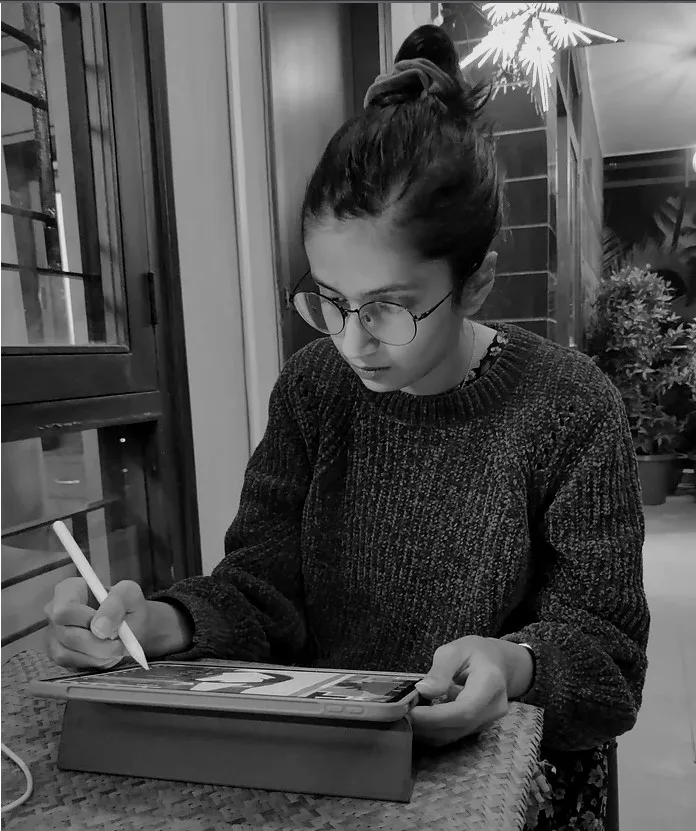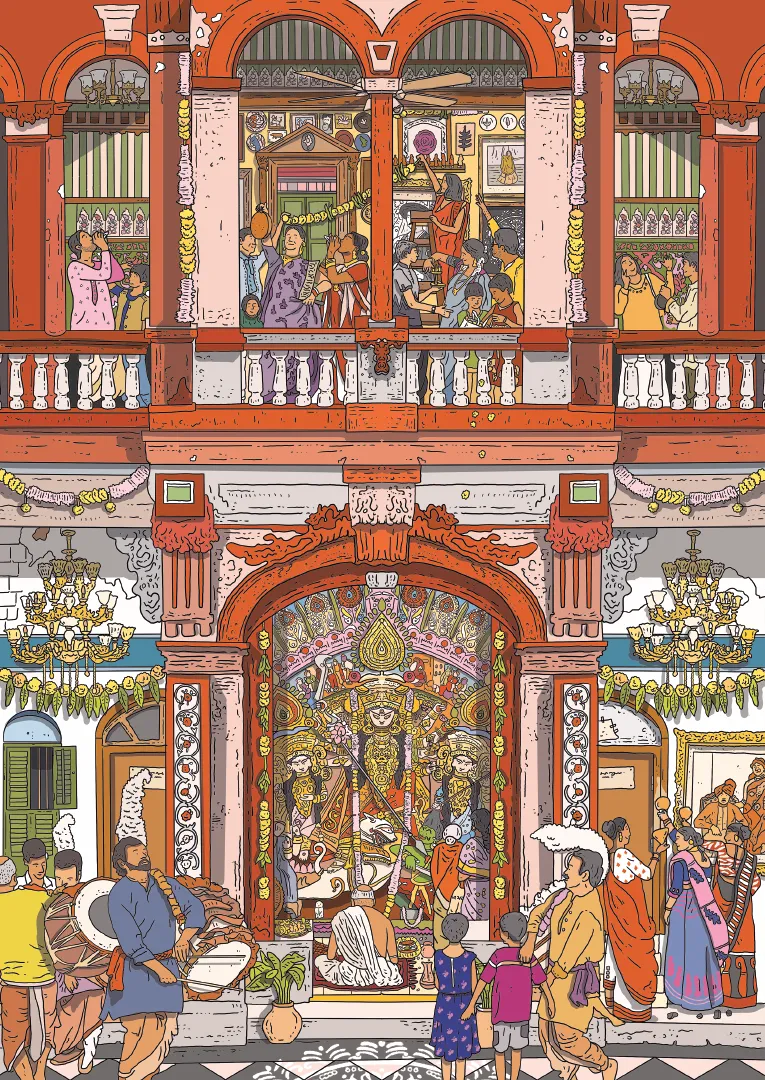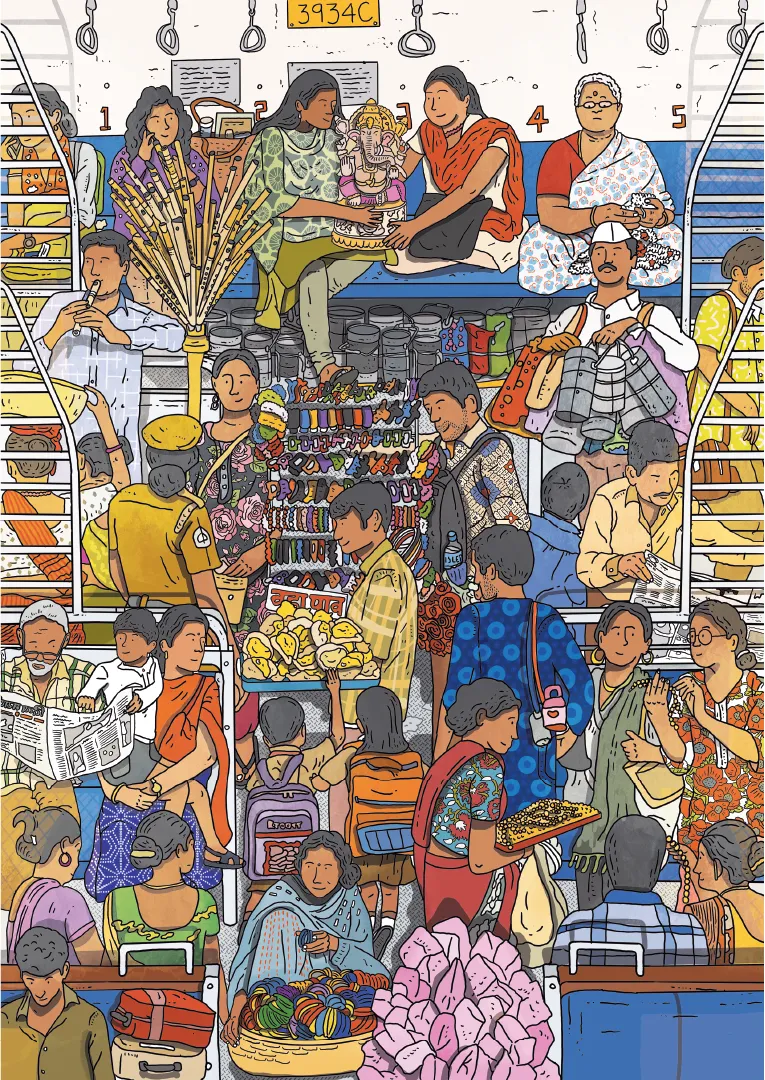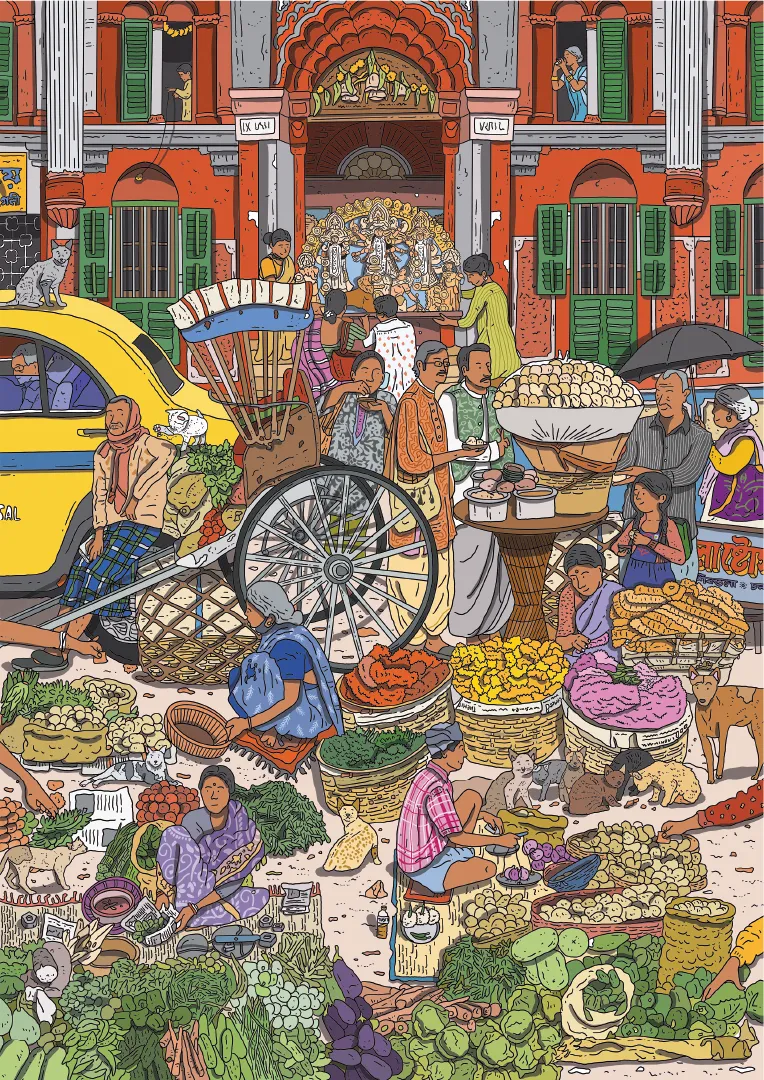Selling nostalgia wrapped in art
In a recent conversation with YS Life, architect-turned-illustrator Surabhi Banerjee sheds light on her work– the inspiration, the method, and the thought process.
When you catch a quick glimpse of illustrator Surabhi Banerjee’s artwork, at first, you are struck with nostalgia. Whether it is the essence of Bengal eloquently captured in her Durga Bari and Bajaar illustrations, or Mumbai’s chaos as demonstrated in Bombay Local – intricate details coupled with a riot of colours make this Bengaluru-based architect-turned-illustrator’s work stand out.
“Most of my illustrations have been inspired by the memories I have had in the different cities that I have lived in at various points of my life,” Banerjee tells YS Life.
Born in Kolkata, she moved across Mumbai, Chennai and Bengaluru, collecting memories and later bringing them together in her artwork. “I could draw vignettes from each of these places every day for the rest of my life and not run out of material,” Banerjee quips.

Architect-turned-illustrator Surabhi Banerjee | Image: https://www.surabhibanerjee.com/
The seed to illustrate was planted and grown through the course of her life. Riddled with anxiety attacks at night, Banerjee found comfort in French comic illustrator Albert Uderzo and French editor Rene Goscinny’s work.
In a recent conversation with YS Life, Banerjee sheds light to her work– the inspiration, the method, and the thought process.
The inspiration
Banerjee spent the first six years of her life in Kolkata, obsessing over the “knick knacks in the rickety storeroom” of her grandparents’ house, “collecting marbles, rocks, broken watches, matchboxes, and all things that people found no value in.”
Years later, her curiosity as a child reflects in her drawings.

Durga Bari by Surabhi Banerjee
Then came architecture.
“I’ve been drawing as long as I can remember, but at the same time I was also building things. I think each one has informed the other, right back to crayon on one hand and Knex on the other,” she tells us.
Banerjee confesses that she chose architecture purely because she enjoyed the subject Technical Drawing in school. Looking back, she reflects that it had to do little with architecture and a lot with precision and being tidy. “While this was not a noble reason to pick a profession, architecture was almost like a sanctuary that I was offered at a time when my peers were allowed to pick from only a handful of exalted career paths,” she says.
Her former boss and mentor Bijoy Ramachandran (architect and Director of the Hundredhands design studio) helped Banerjee set up her own exhibition at the Bangalore International Centre, an event she describes as the last nail in the architecture profession's coffin.
“I finally saw value in the work I was doing as a hobby and decided to pursue it full time,” she adds.

Bombay Local by Surabhi Banerjee
Her decision to draw from what evoked nostalgia with the Kolkata and Bombay drawings has been a game-changer for in her career as an illustrator.
Things finally took off when she got the validation for her work by being offered to work for The Hershey Company, where she had to design the chocolate bar cover for the company’s Sheroes India campaign. “It was my first time working with a huge brand in the industry which let me dip my feet into the world of packaging design,” she says.
Coming to terms with the idea of working for oneself and the sense of responsibility in a place of work that doesn’t necessarily have a regular income source was and is something that she continues to struggle with. “Not to mention that marketing my work and getting it all out there was a huge vein on my forehead as well,” she adds.
The method
Intrigued by the details in each of her artwork, YS Life asks Banerjee to take us through the process of selecting a theme or subject to ultimately listing them on her website for sale.

Bajaar by Surabhi Banerjee
Before drawing, she spends time formulating the narrative behind the artwork. “I proceed by researching and collecting images that complement the story...Most of the time I already have some precedents in mind that I’ve seen before – a beautifully designed interior from a magazine or animal drawings in an old science book or even a faint memory,” she says.
Once research is complete, she begins with line-work. Picking inspiration from an interesting space like a bazaar or train comparment, Banerjee gets to work—she fills it up with characters and objects. Working digitally with tools like Photoshop and Procreate, allows her to experiment with colours.
“In each drawing, my aim is to recreate what it feels like to take a walk through an undiscovered antique shop, full of trinkets and memorabilia,” says Banerjee.
Initially setting up a website to use as a digital portfolio, Banerjee now uses it to sell prints of her artwork.
The thought
“As a child, I was glued to the panels in comic books, going over each frame, and after a few hundred reads, noticing even the penmanship and the colour palette,” she says. Till date, graphic novels and comic books continue to be a great source of information for Banerjee.

Illustration by Surabhi Banerjee for Coca-Cola
The illustrator talks fondly about her artwork Bajaar or market in Bengali. “It builds around the periphery of municipal markets where street vendors, food stalls, flower baskets et al jostle for space with customers, and yes, stray animals! Not to forget the iconic Kolkata symbols – phuchka-walla, hand-pulled rickshaws, thela-gari’s, and the yellow ambassador taxis – all of which have seen better days, but still somehow survive,” Banerjee explains. “It is a treat to our senses– how people eke out a living in such a small space– with a tinge of nostalgia, leaving us with a sense of empathy for all the souls we encounter,” she adds.
When asked to choose between architecture and illustrating, Banerjee says: “I would like to believe that architecture is the reason for my experimentation in different art styles which led me to look at a career in illustrating.”
The difference between what she illustrates and her architectural drawings lies in the fictional aspects that she incorporates in the former.

Surabhi Banerjee has turned her Bombay Local illustration into a 1000-pieces puzzle
Besides The Hershey Company, Banerjee has worked with Facebook on one of their cover illustrations, KFC to design their bucket to celebrate the 600-outlet milestone, Yash Raj Films for the illustrative poster of Shamshera, Coca Cola for Diwali illustration, and with AB InBev for their office art. She has also recently converted four of her artwork into 1000-pieces puzzles.
“It is a real luxury if you have enough time to work on your own art, just for yourself, at the end of the day after all the commissioned projects that pay your bills,” she adds.
At present, Banerjee is less directly involved with architecture as a profession, but continues to feel that architecture is more like her ‘world,’ than illustration. “Maybe I am satisfied to be operating somewhere in the no-man’s land in between them,” she quips.
Her big dream is to see her artwork being featured on the cover of the New Yorker magazine. “Hopefully it happens before I turn 60 (years) and still have a well-functioning eye sight,” says Banerjee cracking into a smile.
(The article was updated to fix a typo)
Edited by Akanksha Sarma







